Guillain-Barré syndrome generally evolves positively when walking is resumed. It is characterized by bilateral damage which, among other things, affects pelvic stability during walking.
The use of a 4-wheel rollator is a good solution to help the patient. Its assistance is substantial, continuous (support 100% of the time), bilateral, …
However, at different stages of rehabilitation, the use of the Wheeleo® walker can be beneficial:
The Wheeleo® is an integral part of the range of mobility aids. It’s part of the therapist’s toolbox.
The Wheeleo® helps you regain your autonomy by freeing one hand and providing continuous assistance in your daily activities.

The Wheeleo V2 is an innovative walking aid, designed to offer more stability than a classic cane while remaining much more maneuverable than a walker.
We tested it at the Autonomic Paris exhibition, and we share our review of this test. The founders are very active in showcasing the qualities of their product.
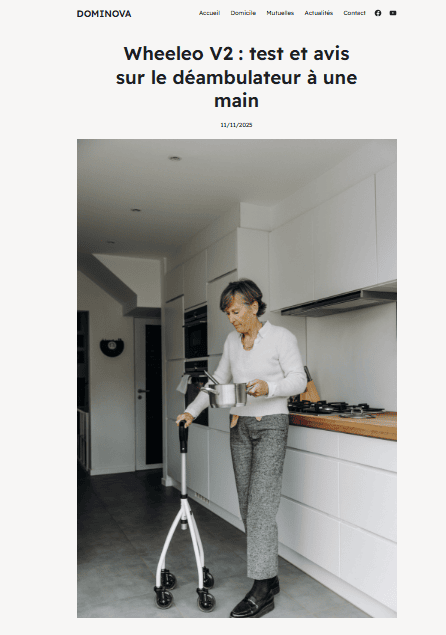
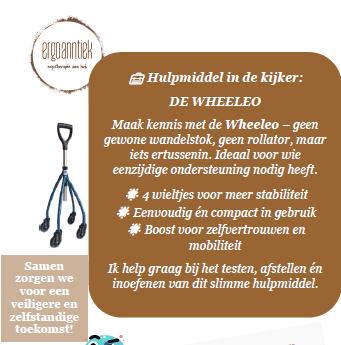
A new walking aid technique made in Belgium, the Wheeleo® is the first one-handed walker. Designed by physiotherapists and launched in 2018, it was perfected in 2020. The Wheeleo® provides constant support without needing to be lifted, all with minimal bulk. Depending on your physical abilities and the environment you are in, it can therefore be a perfect compromise between a cane and a walker.
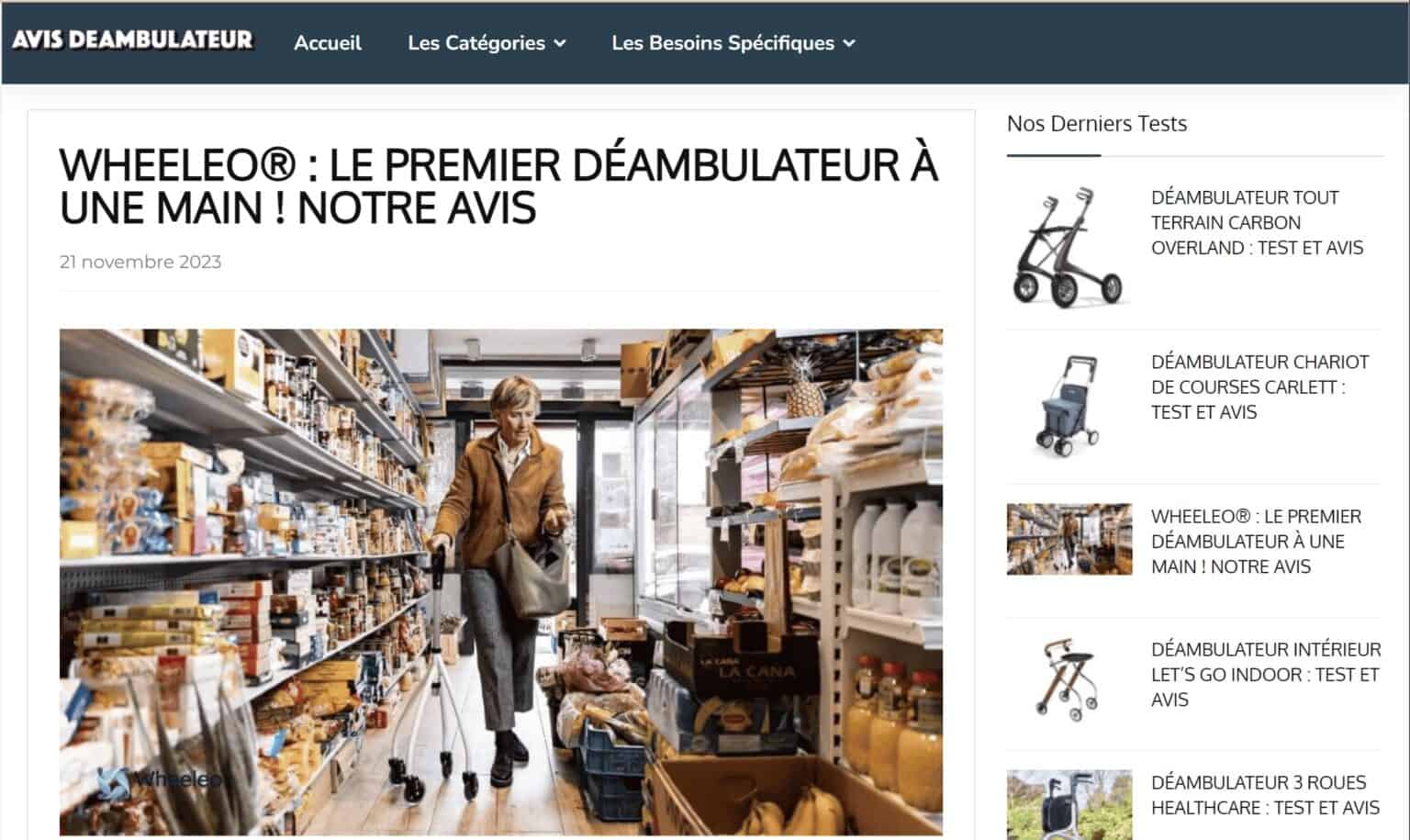
Often, after 60, mobility needs change. Adapting to physical challenges requires a little technical assistance. In this area, walkers are constantly being improved. A closer look at their advantages.
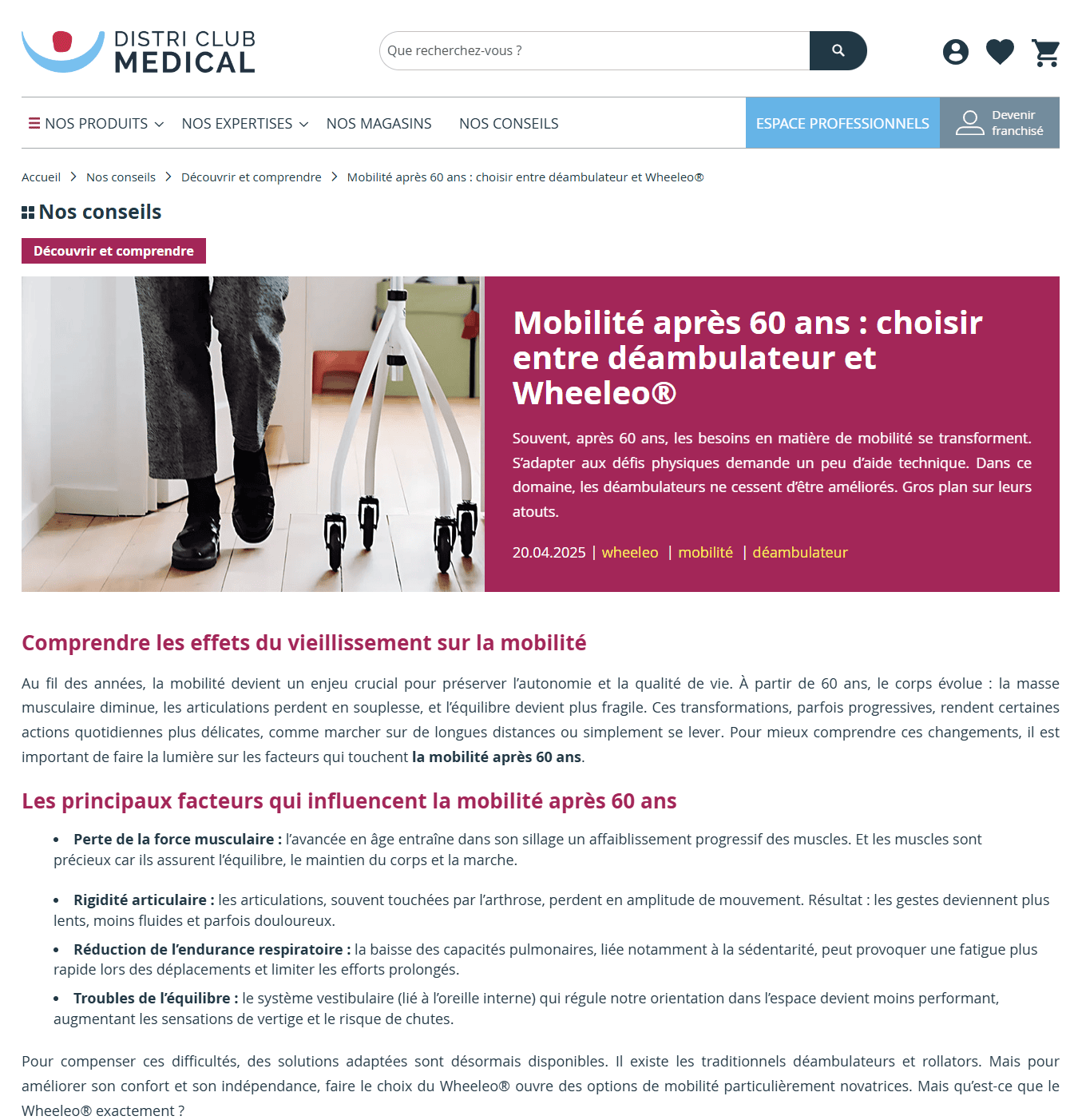
Do you need a temporary walking aid, but hesitate to invest in an expensive product? Renting a Wheeleo® from Qualias is an ideal solution to meet your mobility needs, without compromising on quality or comfort. Initially designed for people who can only use one arm, the Wheeleo® ensures fluidity and stability in all your movements. An opportunity not to be missed to test this innovative product and regain confidence in your movements, whether at home or outdoors.
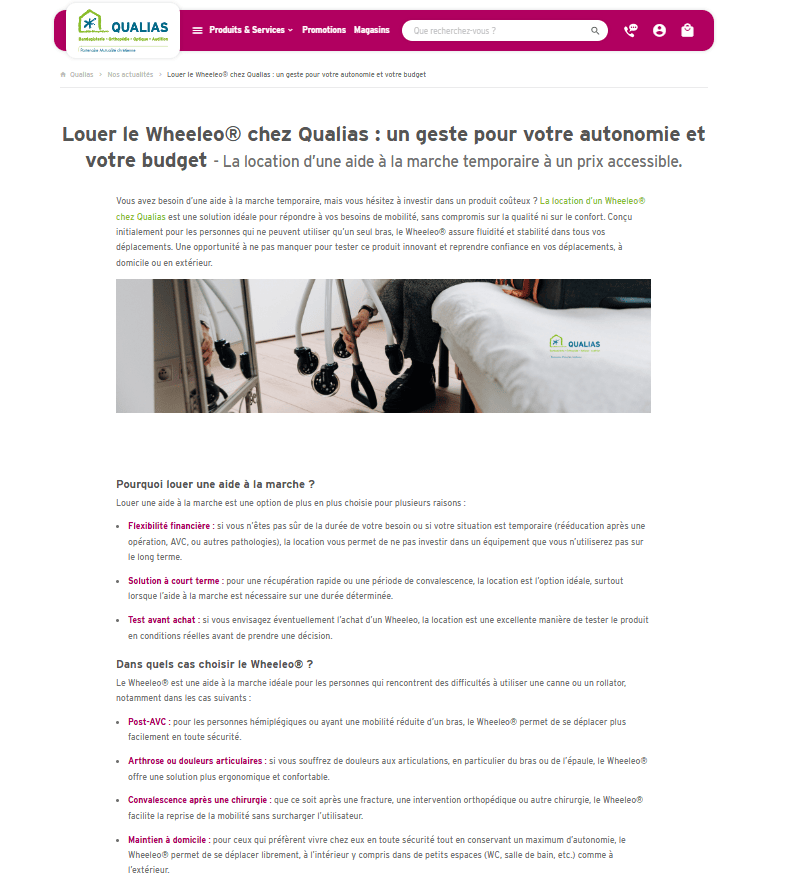
Unfortunately, we are currently unable to deliver the Wheeleo® directly to your area.
Please leave us your contact details, and we will contact you as soon as we have a solution to offer you!
Good news, the Wheeleo® is available in your area.
To do so, please visit our local partner!
Good news, the Wheeleo® is available in your area.
To do so, please visit our local partner!
Good news, the Wheeleo® is available in your area.
To do so, please visit our local partner!
Good news, the Wheeleo® is available in your area.
To do so, please visit our local partner!
Good news, the Wheeleo® is available in your area.
To do so, please visit our local partner!
Good news, the Wheeleo® is available in your area.
To do so, please visit our local partner!
Please fill in this short form so that we can contact you to arrange a test.